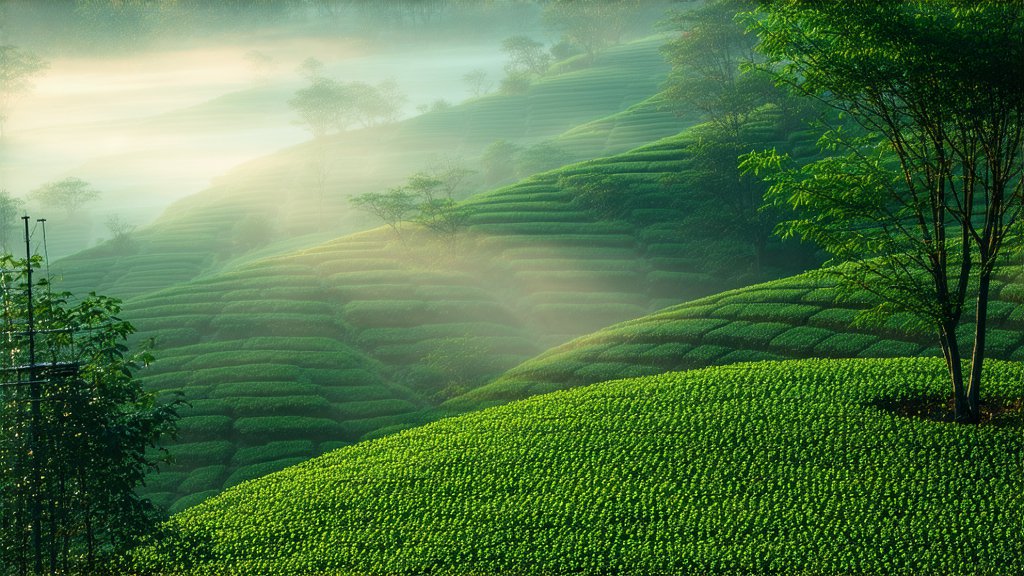
In the heart of China's tea heritage lies a gem that has captivated tea enthusiasts for centuries—Longjing tea, also known as Dragon Well tea. This exquisite green tea, hailing from the picturesque region of Hangzhou in Zhejiang Province, is not just a beverage but an experience steeped in history, culture, and unparalleled craftsmanship.
Historical Roots
The story of Longjing tea traces back to ancient times, with its name believed to have been bestowed by Emperor Kangxi during his inspection tour of the West Lake (Xihu) area. Admiring the tea's flat shape resembling a dragon's well and its vibrant green hue, he declared it "Longjing," meaning "Dragon Well." Over the centuries, this tea has evolved into a symbol of Chinese tea artistry and a staple in the nation's rich tea culture.
Varietal Diversity
Though primarily associated with the West Lake District, Longjing tea comes in several varieties, each reflecting the unique terroir of its cultivation site. The most renowned is the Xihu Longjing, grown around the famous West Lake. Other notable types include Meijiawu Longjing from the Meijiawu Village and Qiandaohu Longjing from Qiandao Lake. Each variant offers subtle differences in flavor profile and aroma, contributing to the diversity within this singular tea category.
The Art of Craftsmanship
The magic of Longjing tea lies in its meticulous handcrafting process, which involves several stages to preserve its delicate flavors and aromas:
- Picking: Only the youngest tea leaves and buds are selected, usually during early spring when they are at their freshest and most nutrient-rich.
- Withering: Freshly picked leaves undergo a natural withering process under controlled conditions, allowing them to lose excess moisture without losing their essential oils.
- Fixation: A crucial step where the leaves are briefly fried in a large wok or pan over high heat. This not only halts oxidation but also contributes to Longjing's distinctive nutty aroma.
- Shaping: Skilled artisans then skillfully flatten the leaves by hand or using specialized equipment, giving Longjing its iconic flat appearance.
- Drying: Finally, the shaped leaves are dried to perfection, ensuring optimal moisture content for storage and brewing.
A Symphony of Flavors
Longjing tea is celebrated for its complex yet harmonious flavor profile. Upon brewing, one can expect a symphony of tastes starting with a sweet, vegetal note followed by a lingering umami finish. Its aroma is often described as chestnut-like, with hints of roasted nuts and fresh grass, inviting drinkers into a sensory journey unlike any other.
The Ritual of Tasting
To truly appreciate Longjing tea, one must engage in the traditional Chinese tea ceremony, which emphasizes mindfulness and appreciation for every aspect of the tea experience:
- Warm the Teaware: Begin by warming the teapot and cups with hot water to enhance the tea's aroma and ensure even brewing temperatures.
- Measure the Leaves: Use approximately 3 grams of loose leaf tea per 150ml of water for a balanced brew.
- Infuse Gently: Pour water heated to around 80°C (176°F) over the leaves, allowing them to unfurl gracefully. Steep for about 1-2 minutes.
- Observe and Inhale: Admire the bright green color of the liquor and take in the fragrant steam rising from the cup before sipping.
- Savor Slowly: Take small sips, allowing the tea to coat your palate fully, experiencing its evolving flavors and subtleties.
Conclusion
Longjing tea is more than just a drink; it embodies the essence of Chinese tea culture—a blend of tradition, artistry, and nature's bounty. From its storied past to the intricate craftsmanship involved in its production, every cup tells a tale of dedication and love for the art of tea-making. As you embark on your own exploration of Longjing tea, let each sip transport you to the misty hills of West Lake, where the legacy of this luminous green elixir continues to thrive.